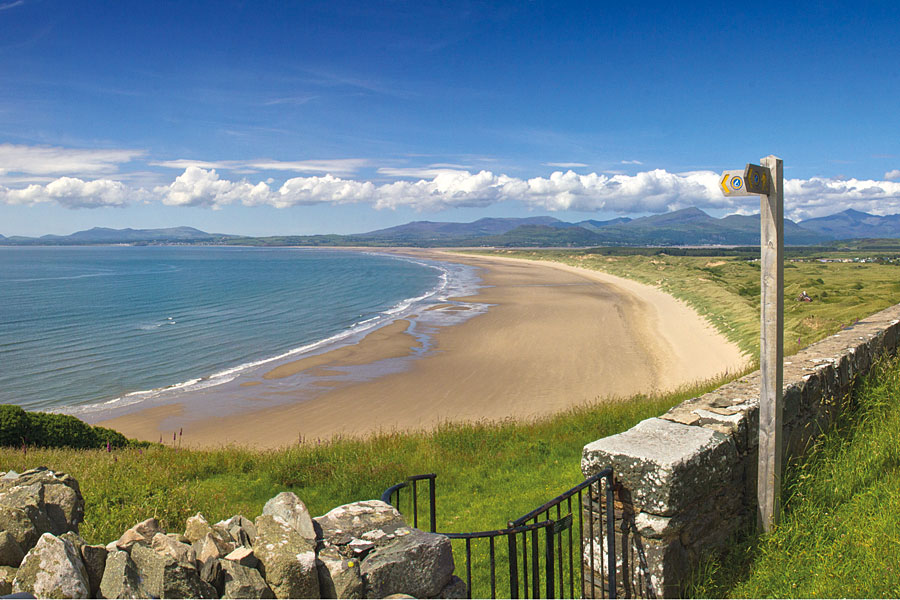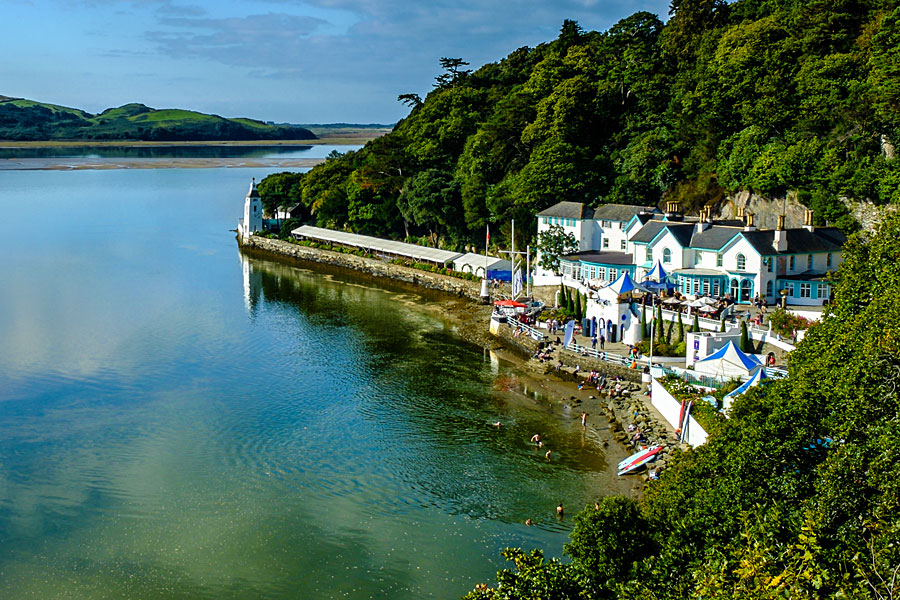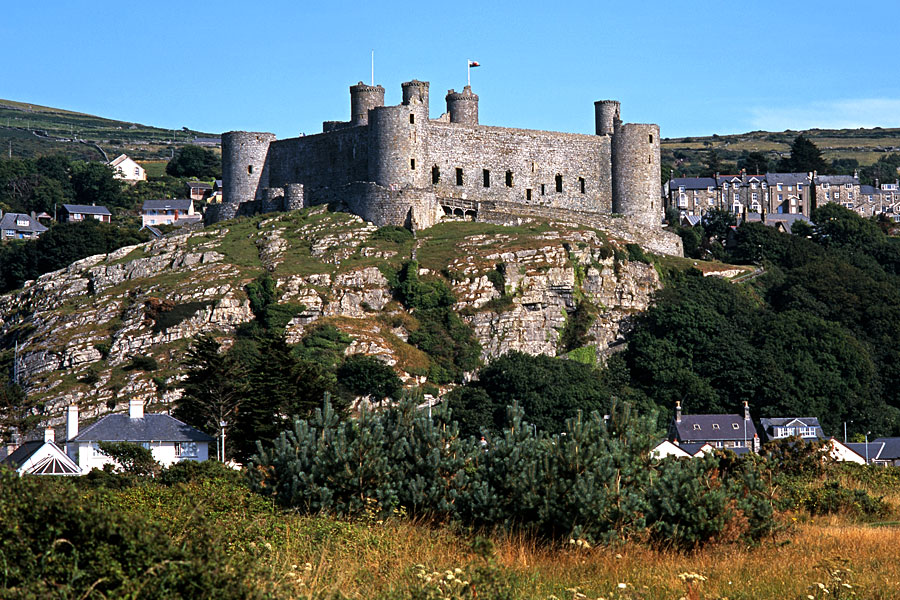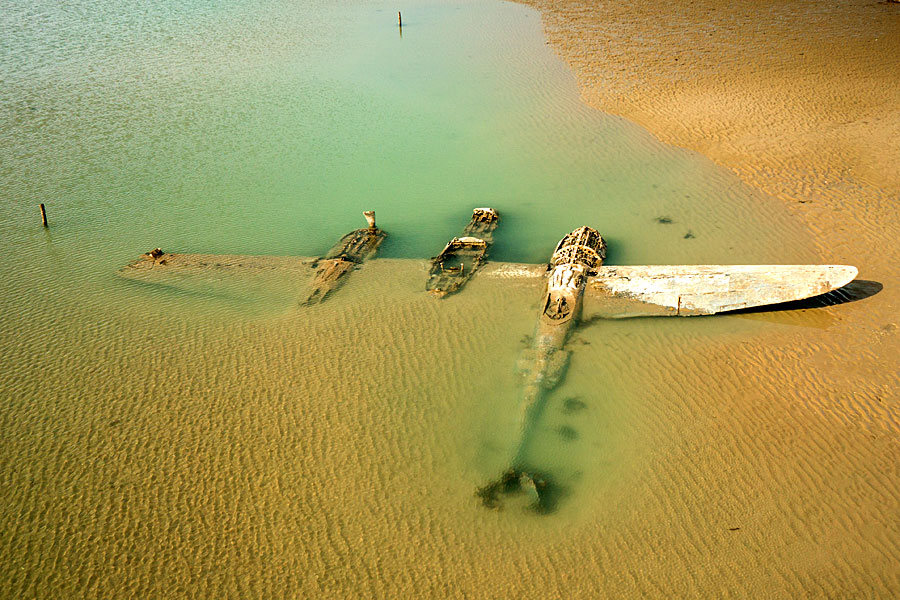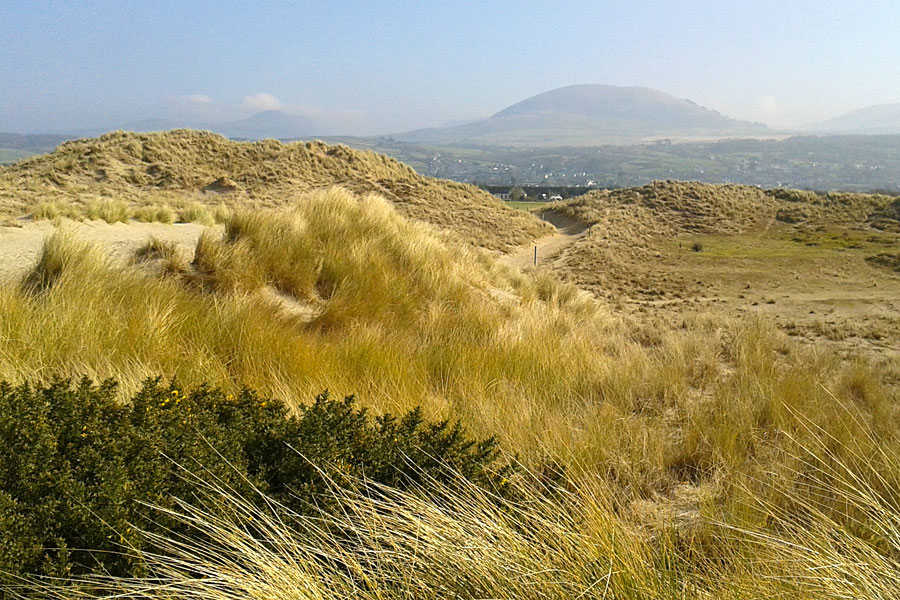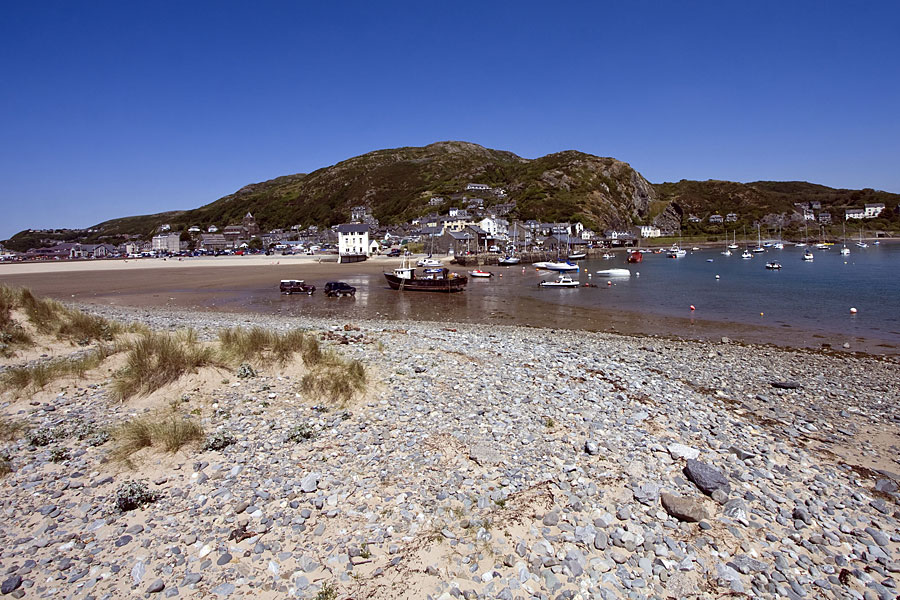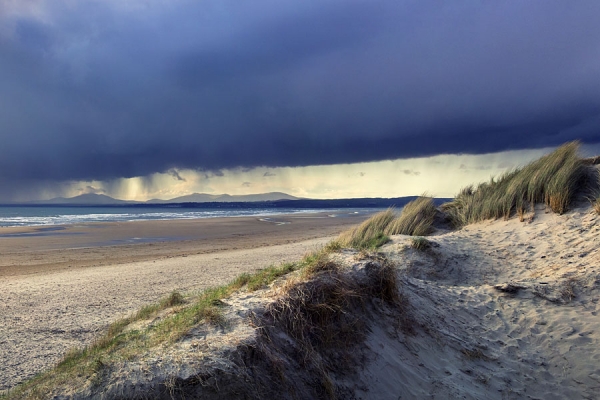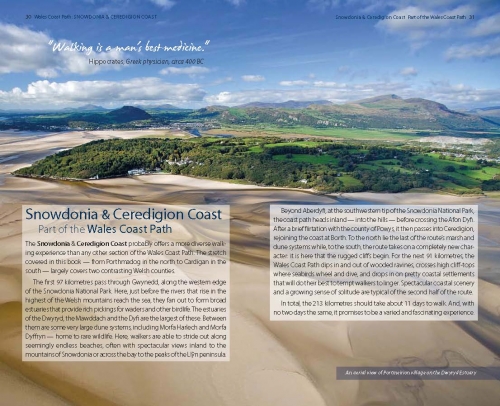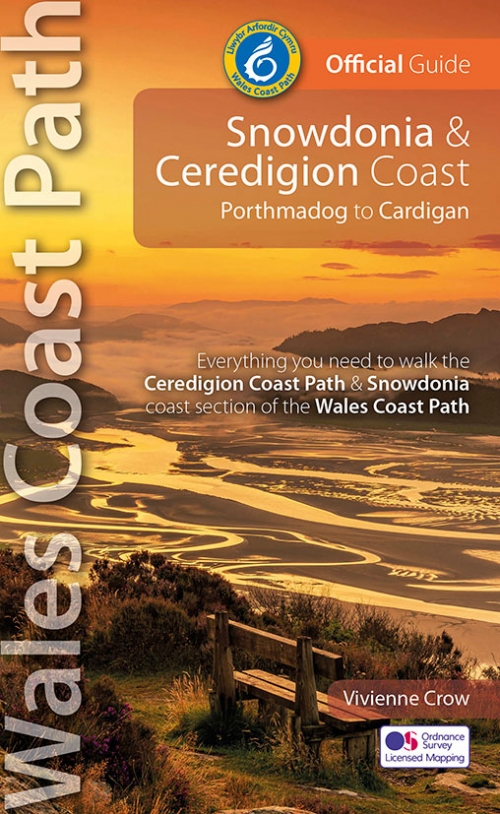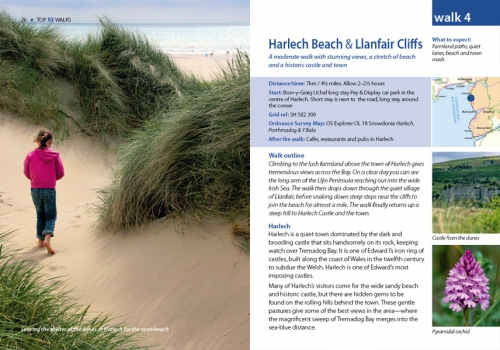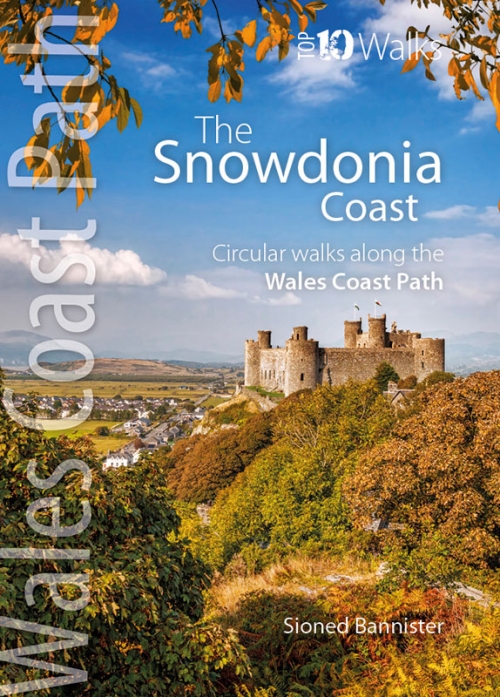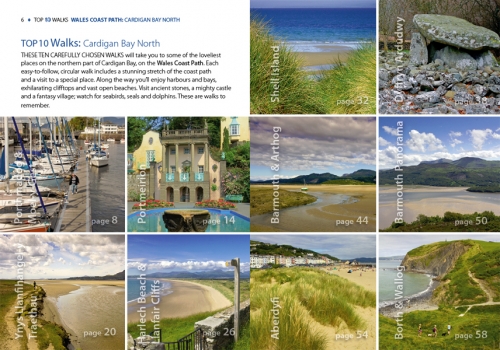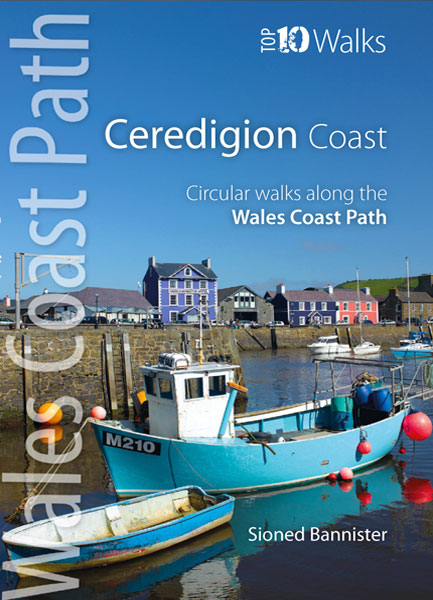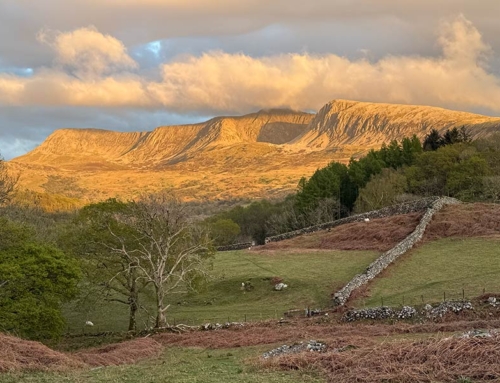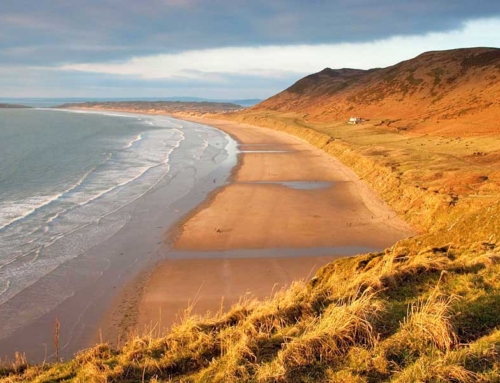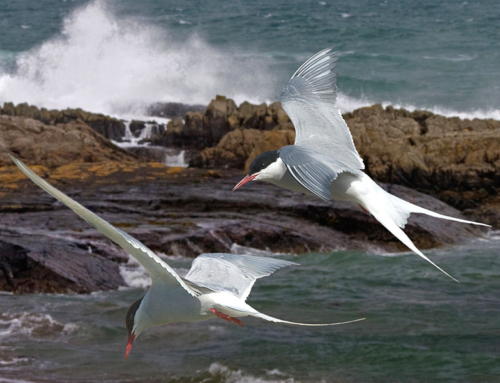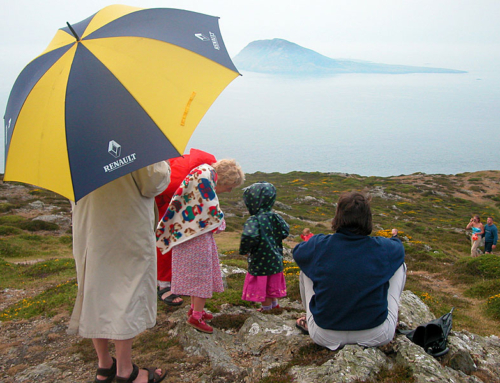Harlech Beach stretches for miles along the Gwynedd coast
Catching the train from Harlech and Barmouth, Vivienne Crow walks 60 miles along the Snowdonia and Gwynedd coast
WHEN I WAS IN MY EARLY TWENTIES, I thought nothing of carrying a huge rucksack complete with camping gear on long-distance walking trips.
By the time I reached my 30s, I’d ditched the camping gear and had opted for the relative luxury of hostels and B&Bs. Come the big 4-0 and I was no longer willing to carry all my own gear on long trails: I discovered the joy of ‘packhorse’ luggage-carrying services. Now, I find it easier to take my home with me – well, my motor-home at least – park it up on campsites and then use public transport…
Actually, in fairness, hiking part of the Wales Coast Path in this fashion was my first experience of this method of walking long-distance trails, but it worked well, and I’d certainly do it again. It was only as my partner and I were poring over maps of the route from Porthmadog to Aberdovey in Gwynedd, wondering about the chances of finding dog-friendly B&Bs, that I spotted the solid black line running almost parallel with the path. “Hey! There’s a railway all along this coast. I wonder if there are many campsites…” There were. After some more research, we identified Harlech and Barmouth as convenient bases for our 59-mile mini-trek.
It felt strange getting up on the first morning of our hike, boarding the train for Porthmadog, knowing that, at the end of the 14-mile day we had planned, we’d be back on the train – like commuters. All I had on my back was a light pack with the usual things I’d take on a day walk such as waterproofs, map, food and water.
Let the train take the strain …
It felt strange getting up on the first morning of our hike, boarding the train for Porthmadog, knowing that, at the end of the 14-mile day we had planned, we’d be back on the train – like commuters. All I had on my back was a light pack with the usual things I’d take on a day walk such as waterproofs, map, food and water. I thought about the first long-distance walk I’d ever done. Fresh out of sixth form, a friend and I decided we’d celebrate the end of our A-levels by walking part of the the South West Coast Path. With little experience of walking, let alone backpacking, I filled my rucksack with all sorts of nonsense including a radio, a hefty journal and even a hairdryer.
My Welsh trip was considerably better thought-out. We alternated reasonably long days of 12 to 14 miles with shorter walks of between six and nine miles, allowing time for dawdling and visiting attractions such as the fanciful Italianate village of Portmeirion, Harlech Castle and the Talyllyn Railway, the world’s oldest preserved line.
Constant improvements
It may come as a surprise to some that the Wales Coast Path doesn’t always hug the shoreline. Between 2007 and 2014, almost £15 million was spent on creating the 870-mile route that runs from the Flintshire border near Chester to Chepstow on the Severn estuary, but improvements are constantly being made as new routes are negotiated with landowners and bridges are built over estuaries to avoid long inland detours.
There are several such detours on the section we walked. In fact, on our first day, we hardly glimpsed the sea as the official route took us inland for several miles: to cross the Vale of Ffestiniog at Maentwrog. It was no hardship as the route wound its way in and out of beautiful woodland lining the hillsides, often accompanied by the haunting whistle of the steam trains on the Ffestiniog Railway. (Since this article was published, a new bridge – crossing the Afon Dwyryd next to the new Pont Briwet viaduct – removed the need for this inland trek, reducing the total distance by more than eight miles.)
After regaining the coast at the end of our first day, we found ourselves wandering beside beautiful wooded estuaries, across salt-marshes rich in birdlife and along some of the biggest beaches I have ever encountered, including Harlech, beautiful Morfa Dyffryn and another long stretch between Tywyn and Aberdovey. The beaches are backed by immense dune systems and, as we walked along the sand, I had a wonderful feeling of isolation, of being cut off from the rest of the world. There was nothing but sand and sea – and jaw-dropping views. To the north, the Llŷn Peninsula jutted out into the vast, blue emptiness, forming the northern limit of Cardigan Bay. From Harlech, the highest mountains of Wales were visible, with Snowdon standing out from its neighbours: a rocky pyramid pointing skyward, the sort of peak a child would draw, but without the snowy, icing-sugar topping.
Dolphins and little egrets
Wildlife enthusiasts will love this section of the Gwynedd coast too. Cardigan Bay is home to Britain’s largest resident population of dolphins – somewhere between 150 and 200 of the creatures, known in Welsh as morhwch or ‘sea pigs’, are thought to live here. We didn’t spot any mammals as we pointed our binoculars seaward, but we did come across large flocks of oystercatchers, redshank, sanderling and lapwing. One of the biggest surprises was seeing a marsh speckled with white. The binoculars revealed little egrets. Only the previous summer, while walking the Pembrokeshire Coast Path, I’d assured two American tourists they were “definitely mistaken” when they told me they’d seen egrets at the Bosherston Lily Ponds. Now, blushing with the memory of my over-confidence, I realised they’d probably been right. I hadn’t known at the time that this heron-like bird was slowing making its way north after first breeding on England’s south coast in 1996.
They were lots of other pleasant surprises between Porthmadog and Aberdovey: crossing the autumn-tinged Mawddach estuary via the impressive Barmouth Bridge, built by the Victorians and still standing firm against the elements at the foot of the mighty Cadair Idris range; the delightful green lane descent into Llwyngwril after another inland detour; early morning encounters with foxes, deer and stoats; ancient, secluded churches and lovely, laid-back towns… The list goes on.
But the biggest revelation of all was the sudden realisation that walking a long-distance trail doesn’t have to be a blister-ridden test of strength and stamina.
This article first appeared in The Camping and Caravanning Club‘s monthly magazine in April 2015, and is re-published here with the author’s permission. © Vivienne Crow 2015. All rights reserved.
Vivienne Crow is an award-winning freelance writer and photographer specialising in travel and the outdoors. She has written almost 20 walking and travel guidebooks, contributes regular features to newspapers and magazines, and does copywriting for conservation and tourism bodies. Vivienne is a member of the Outdoor Writers and Photographers Guild, and is available for commissions.
Contact: viviennecrow@hotmail.com
Books and maps for this part of the coast


